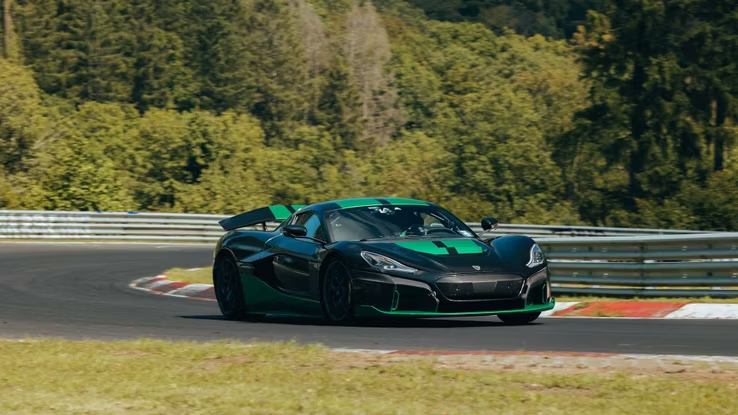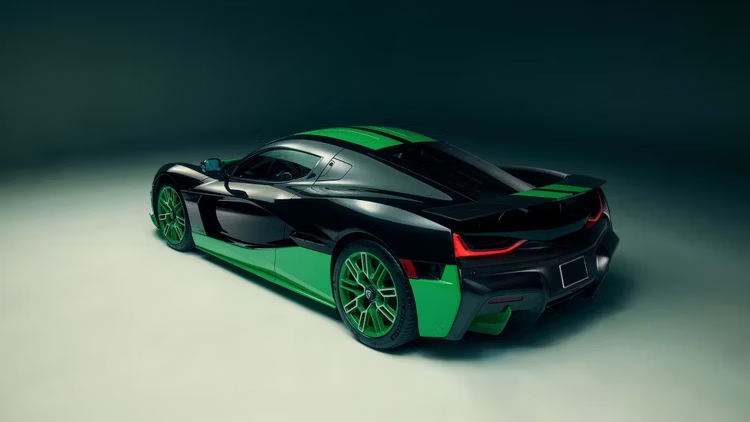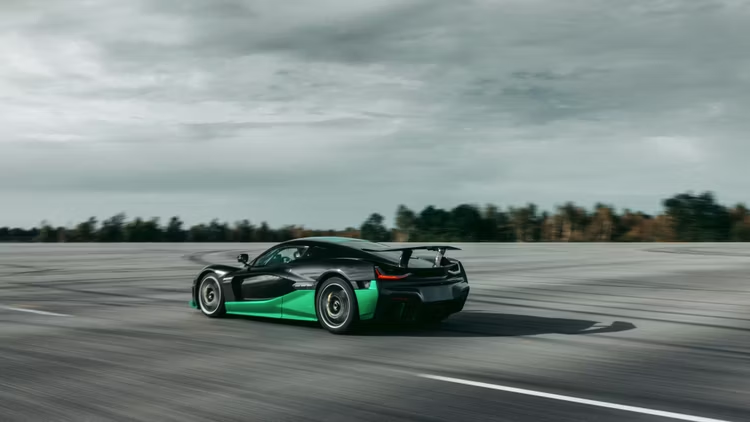The Rimac Nevera is a Croatian-built electric hypercar that currently holds the title of the fastest electric car in the world, boasting a mind-bending top speed of 258 mph (415 km/h).
Here’s a deeper dive into this impressive feat of engineering:
Lightning Speed and Staggering Power:
- The Nevera achieves its record-breaking speed through four permanent magnet synchronous electric motors, one at each wheel. This revolutionary setup eliminates the need for a traditional gearbox or transmission, resulting in instant torque and blistering acceleration.
- Combined, these motors unleash a phenomenal 1,914 horsepower and 1,726 lb-ft of torque. This translates to a 0-60 mph (97 km/h) time of a mere 1.85 seconds, pinning you back in your seat and blurring the world around you.

It isn’t just about raw power; it incorporates cutting-edge technology for a truly unique driving experience. An advanced all-wheel-drive system with torque vectoring allows for exceptional handling and stability, even at its mind-blowing speeds. The sleek and aerodynamic design, crafted from lightweight carbon fiber, reduces drag and contributes to the car’s overall performance. The interior is a luxurious and tech-forward space, featuring a driver-focused cockpit with a digital instrument cluster and a massive central touchscreen for controlling the car’s various functions.

Keeping with its exclusive nature, the Nevera is produced in a limited run of only 150 units. This exclusivity combined with the advanced technology and immense performance makes the Nevera a car only a select few can own. With a price tag of around $2.4 million, the Nevera is undoubtedly an investment for the wealthy car enthusiast seeking the pinnacle of electric hypercar performance.

The Nevera isn’t just about achieving the highest top speed. It’s a showcase of Rimac’s technological prowess and a glimpse into the future of electric hypercars. The car’s development has pushed the boundaries of electric vehicle technology, paving the way for even faster and more capable electric cars in the years to come.


